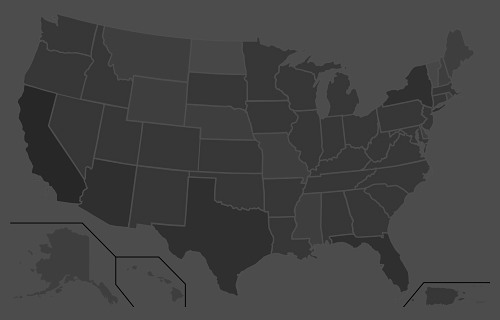“Our added winter moisture and active calling period led to a very long nesting and hatching season, starting in late April and extending into early summer, with chicks hatching as late as early July,” O’Dell said. “From a population standpoint, we are out of a deficit for the first time since 2001-2002. Quail are starting to pop up in places they haven’t been seen in a while.
“If you’ve never had the chance to experience what Arizona quail hunting built its name on, then this would be the year to get out and enjoy it.”
Meanwhile, hunters should note that the season for Mearns’ quail doesn’t begin until Dec. 4. It’s summer rainfall that plays a key role in nesting success and population numbers of this species. After a spotty and relatively weak monsoon across southern Arizona, these birds are likely to be abundant only in pockets that received sufficient precipitation this summer.
A valid Arizona hunting or combination hunt and fish license is required for all hunters 10 and older. Those hunters under 10 must either have a valid hunting or combination hunt and fish license, or be accompanied by an adult who possesses a valid hunting or combination hunt and fish license. Licenses can be purchased online or at license dealers statewide. A youth combination hunt and fish license (ages 10 to 17) is $5.
The general bag limit is 15 quail per day in the aggregate, of which no more than eight may be Mearns’ quail (when the Mearns’ season opens Dec. 4). The general possession limit is 45 quail in the aggregate after opening day, of which no more than 15 Gambel’s, scaled or California quail in the aggregate may be taken in any one day. After the opening of the Mearns’ season, the 45-quail possession limit may include 24 Mearns’ quail, of which no more than eight may be taken in any one day.
More quail-hunting information can be found on the department’s website at https://www.azgfd.com/Hunting/. Another resource for both new and experienced hunters alike is “An Introduction to Hunting Arizona’s Small Game.” Written by Randall D. Babb, the 196-page, full-color book covers where and how to hunt small game birds (like quail), squirrels, rabbits, ducks and geese. It also includes how to prepare and cook your harvest, with illustrations and recipes. The book can be ordered for $16.95 at www.azgfd.gov/publications.
Finally, hunters should check out O’Dell’s techniques for field-dressing quail at https://www.youtube.com/watch?v=3gRwZAcWzzk.
####
Publishers Notes: OUT OF STATE HUNTERS, FISHERMEN & OUTDOOR ENTHUSIASTS; Due to the Covid 19 pandemic, there could be limitations for OUT of STATE hunters, fishermen and other outdoor enthusiasts to include a 14-day quarantine requirement or negative COVID-19 testing alternative. Please check with the State's Department of Natural Resources BEFORE you travel or apply for the 2020 Fall Hunts.
Disclaimer: The views expressed on this site are that of the authors and not necessarily that of TBC Press
The Maryland Department of Natural Resources announces the muzzleloader deer hunting season will reopen Dec. 19 and run through Jan. 2, 2021. This is the second half of Maryland’s split deer muzzleloader season; the first half was held in October. Hunters may use muzzleloading firearms to harvest sika and white-tailed deer during these dates.
“The late muzzleloader season coincides with the holidays, and gives hunters the opportunity to spend time in the field enjoying some of the best days of the year,” Wildlife and Heritage Service Director Paul Peditto said. “The season is important to help manage the state’s deer population, and put food on the table for many families.”
Hunters are encouraged to consult the Maryland Guide to Hunting and Trapping for information on bag limits, registration procedures, and other regulations.
Maryland 2020 Muzzleloader Deer Season Reopens Dec 19
Submitted by: TBC Press
Posted on: 12/09/20
The Backcountry Press
The country's premier daily HUNTING, FISHING & OUTDOOR news in the USA and around the globe. Read whats happening in your neck of the woods & beyond.
© 2020 TBC Press - All Rights Reserved Website Design by:
News # 14124
During muzzleloader season, Maryland requires deer hunters and their companions to wear daylight fluorescent orange or daylight fluorescent pink in one of the following manners: a cap of solid fluorescent daylight orange or pink, a vest or jacket containing back and front panels of at least 250 square inches of fluorescent daylight orange or pink, or an outer garment of camouflage daylight fluorescent orange or pink worn above the waist and containing at least 50 percent daylight fluorescent color.
Hunters are additionally reminded to use precautions to prevent the spread of COVID-19, which includes keeping six feet away from anyone who does not reside with you, and wearing a facial covering when social distancing isn’t possible.
Hunters should carefully inspect all treestands, and always wear a full-body safety harness while in the stand, and while climbing in or out. The department strongly recommends using a sliding knot, commonly known as a prusik knot, attached to a line that is secured above the stand that allows the hunter to be safely tethered to the tree as soon as they leave the ground.
Maryland hunters are encouraged to donate any extra deer they may harvest to Farmers and Hunters Feeding the Hungry. Hunters are reminded that they may claim a tax credit of up to $50 for each legally harvested deer that is processed and donated to a nonprofit food sharing program. The maximum credit in any one tax year is $200 per hunter. The approved form to claim this credit is available online.
####
Publishers Notes: Our country is still battling COVID-19. To avoid the spread of this virus and continue to enjoy outdoor activities, ALL outdoor enthusiasts (man, woman, child) should follow the guidelines set by nps.gov. These guidelines include; social distancing, the Leave No Trace principles, including pack-in and pack-out, to keep outdoor spaces safe and healthy.












